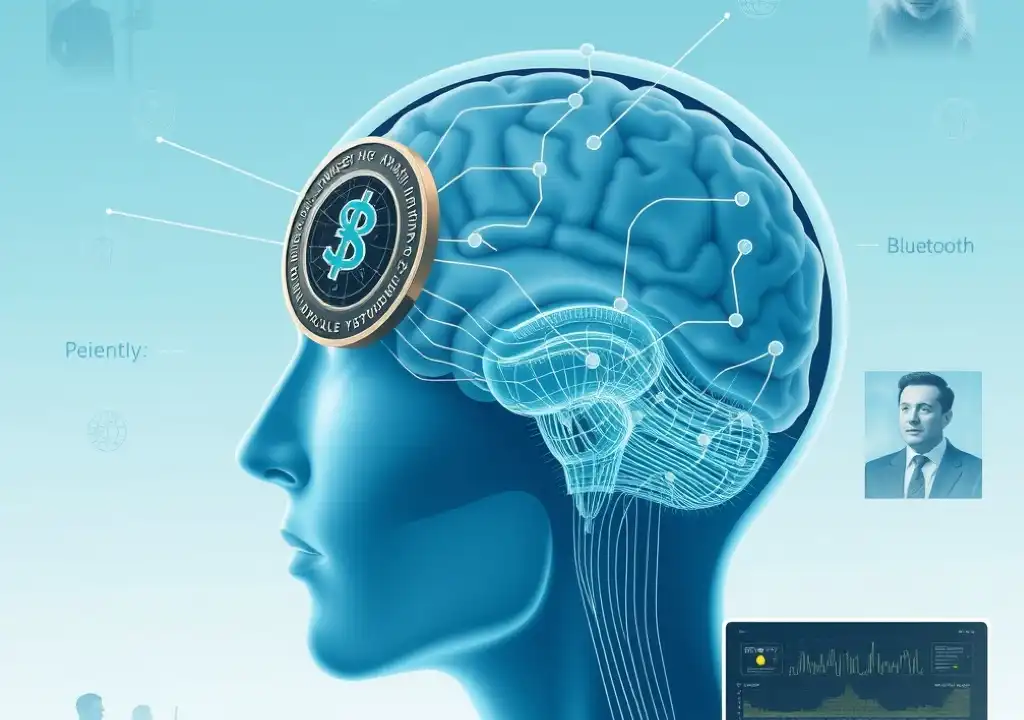The coin-sized device aims to restore function and connect brains directly to devices, but ethical and safety concerns remain.
Elon Musk’s brain-implant company, Neuralink, has successfully implanted its wireless brain chip into a human for the first time, marking a major milestone nearly a year after receiving regulatory approval. The billionaire confirmed on Monday that the patient who received the implant on Sunday is “recovering well.” While the breakthrough raises hopes for technological and medical innovation, the announcement has yet to be independently verified, and Neuralink has provided limited information.
Neuralink, which Musk has called the future of human-machine integration, has drawn both excitement and criticism, especially over ethical concerns about human and animal testing. Here’s a breakdown of what Neuralink is, what the brain chip does, and why the trial is being closely watched.
What Is Neuralink and What Does It Aim to Do?
Founded in 2016 by Musk, Neuralink is a neurotechnology startup focused on building a brain-computer interface (BCI). Its device, roughly the size of a coin, is surgically implanted into the skull with ultra-thin wires extending into the brain. These wires detect brain signals and transmit them via Bluetooth to external devices like smartphones.
The first product, called “Telepathy,” aims to let users control electronic devices just by thinking. By targeting the brain’s motor control region, the implant could help people with paralysis or neurological conditions regain functional capabilities, according to the company. Musk has stated that the first users would likely be those with severe mobility impairments.
What Is the Human Testing Phase About?
The human trials are designed to test the safety and performance of the Neuralink chip. The goal is to monitor how effectively the implant captures neural activity while improving the device’s design. Musk shared that early results show “promising neuron spike detection,” a key signal of electrical activity in the brain that enables everyday tasks like moving, speaking, and eating.
Neuralink began recruiting trial participants in September, focusing on individuals with spinal cord injuries. The U.S. Food and Drug Administration (FDA) approved the trials in May 2023, following investigations into previous animal trials and their ethical implications.
What Preclinical Testing Has Neuralink Done?
Before human trials, Neuralink tested its technology on pigs and monkeys. The company showcased videos of monkeys using their mind to control cursors or play simple video games. While Neuralink maintains that no monkeys died from the implants, reports have surfaced of serious complications such as brain swelling, seizures, and paralysis.
These outcomes led to heightened scrutiny from federal agencies and animal rights groups, especially concerning the welfare of test animals and the transparency of Neuralink’s practices.
Are Other Companies Working on Brain Chips?
Yes, Neuralink is not alone in this field. The U.S. clinical trial database lists around 40 active BCI trials. One notable competitor is Synchron, an Australian company that implanted a similar device in a U.S. patient in July 2022. Unlike Neuralink, Synchron’s implant does not require opening the skull, making the procedure less invasive.
Most other companies are focused on medical applications like restoring motor functions or communication abilities, whereas Neuralink has broader ambitions, including enabling users to interact with digital devices using only their minds.
What Are the Ethical and Safety Concerns?
Experts and ethicists have voiced concerns over Neuralink’s use of animals in experiments and the potential health risks of brain surgery, including seizures and hemorrhage. There is also apprehension about the implications of reading and possibly recording neural data. Questions remain about how user data will be stored, shared, and protected.
Additionally, Neuralink faced regulatory trouble earlier this year when the U.S. Department of Transportation fined the company for improperly transporting hazardous materials — specifically, implants removed from primates — without proper registration. This incident added to broader concerns about oversight and safety standards.
As Neuralink moves forward with human trials, observers are keenly watching to see whether the technology lives up to its transformative promises—or poses more risks than rewards.

